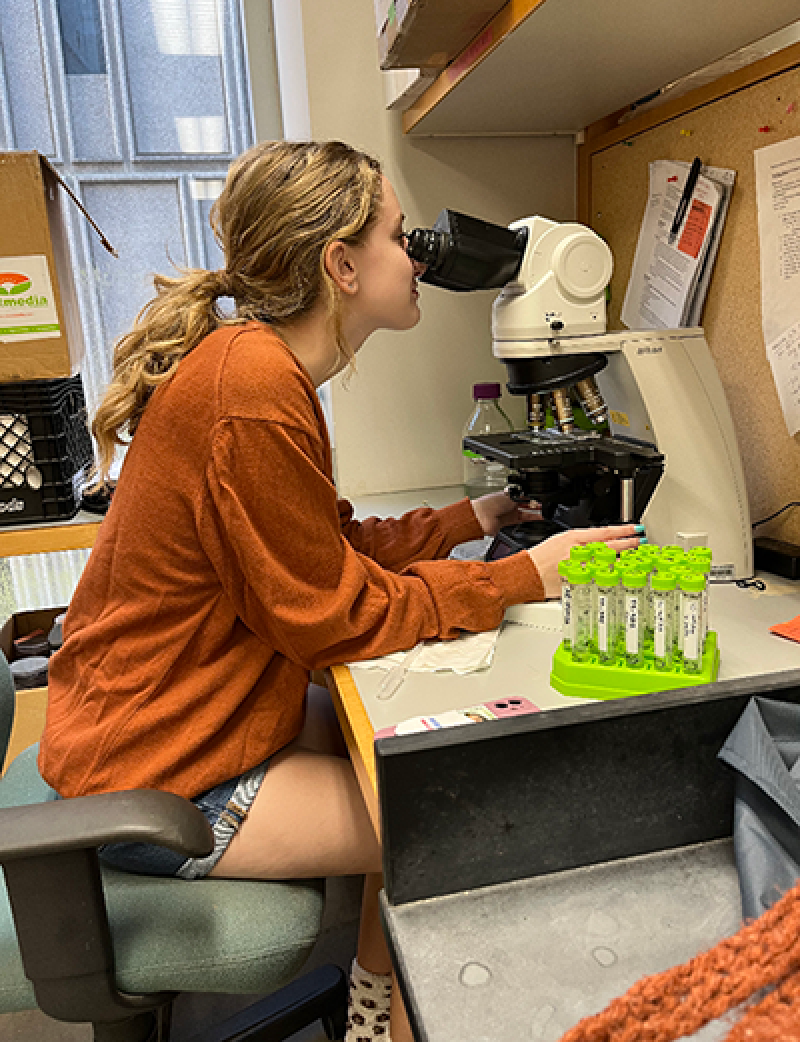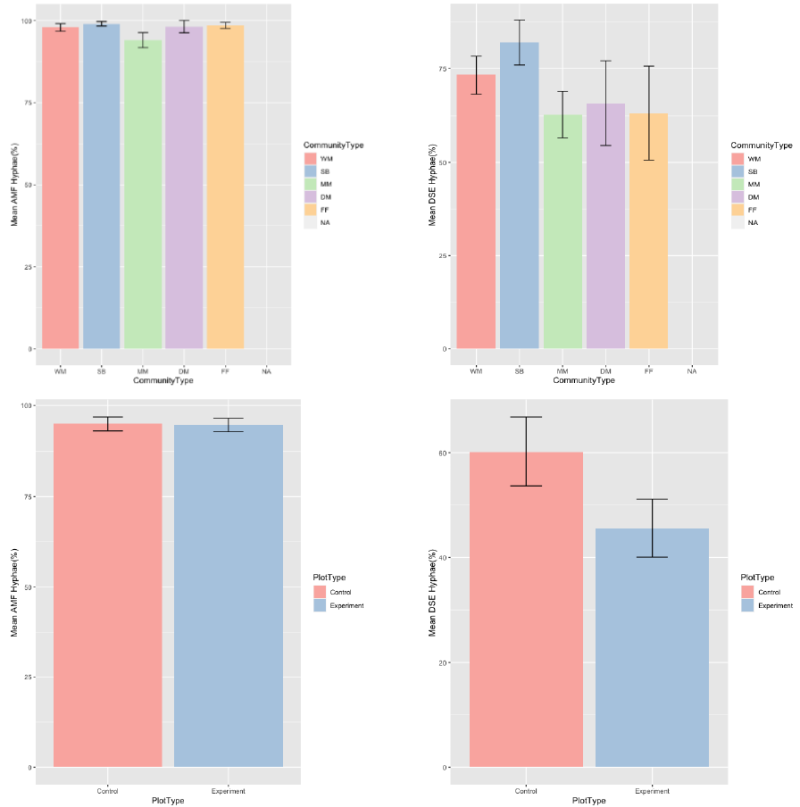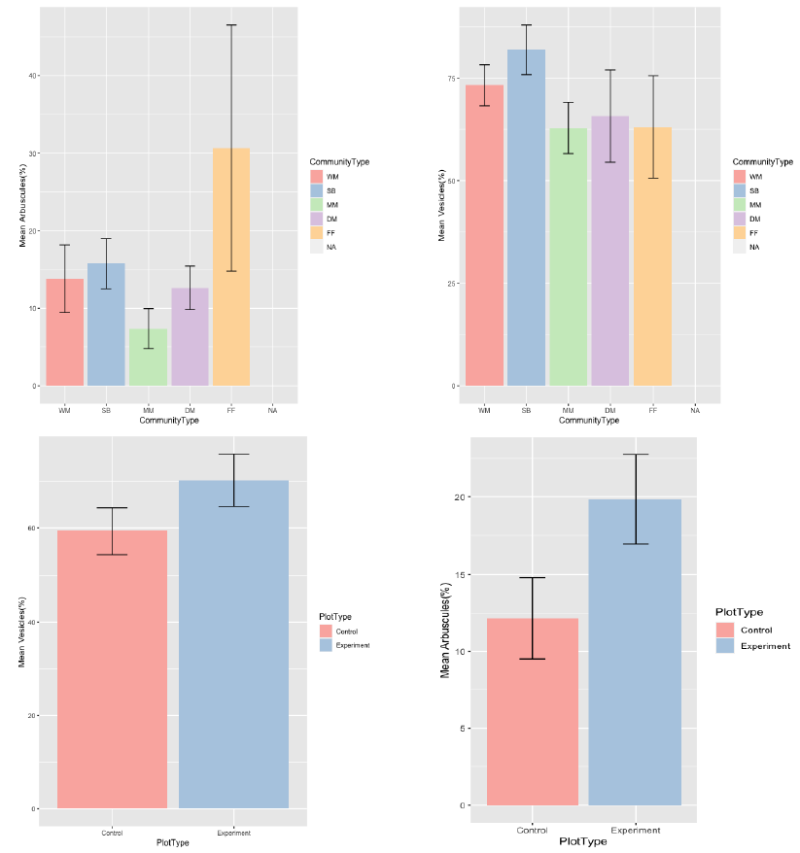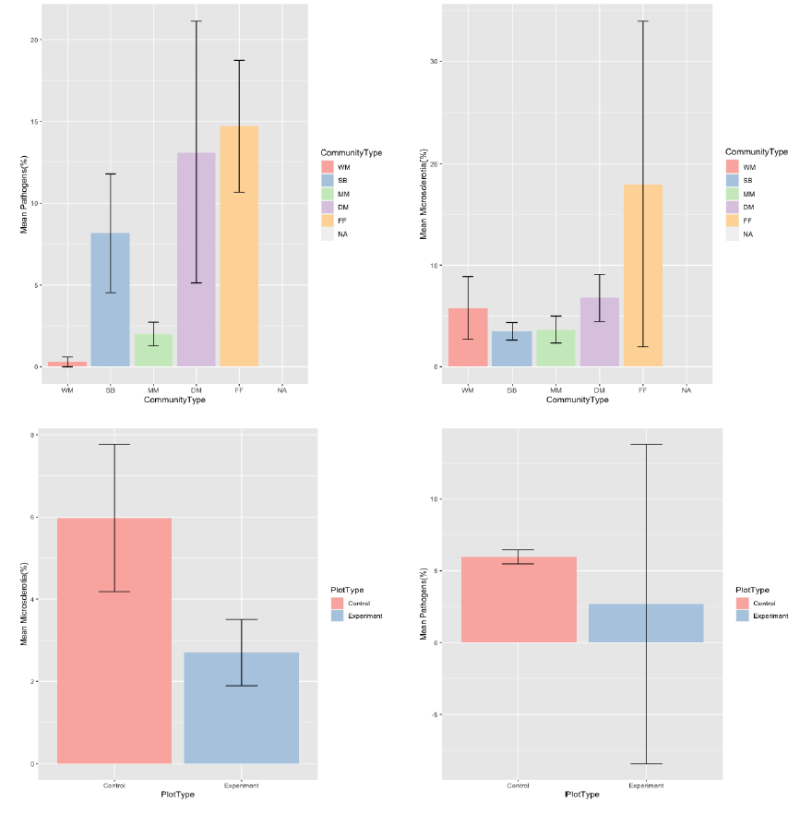Danna Hirshberg Grant Story
Danna Hirshberg Grant Story
Conducting Research: The Effect of Climate Change on Plant-Microbe Interactions in an Alpine Environment

The grant I received allowed me to do important fieldwork and continue my research on the effect of climate change on plant-microbe interactions in an alpine environment. With a changing climate comes a change in plant-microbe interactions. Ecologists across the globe have been researching the differences in plants and their relationships with their environment as the planet warms up. A topic of particular interest is how plants might alter their interactions with microbial organisms because of a shift in abiotic factors.
Microbial pathogens and mutualists found in plant roots are changing in numbers, composition, and carbon acquisition potential. We investigated the effects of climate change on plant-microbe interactions by quantifying the number and type of fungal structures found in plant roots sampled from inside experimental warming chambers across a moisture gradient in the alpine tundra. Although research is still in progress, our collected data indicate that variations in temperature and moisture levels impact microbe structure and response to climate change in plant roots. We also are seeing that pathogens are impacted by temperature and moisture in an alpine ecosystem through our preliminary results.
Introduction
Fungal microbes found in plant roots are shown to be influenced by abiotic changes brought on by an increasingly warmer climate. When discussing the negative effects of climate change, many aren’t considering the microscopic organisms. However, they are changing rapidly due to differences in abiotic factors such as temperature and moisture. We wanted to understand how climate change will affect microbe-plant interactions and abundance in alpine tundra, specifically Niwot Ridge in the Colorado Rocky Mountains. There are several reasons why we chose this particular area to collect samples from. We wanted an area that has seen a large change in plant composition and diversity, which makes a mountain ecosystem the perfect location since these locations are heavily impacted by climate change. Climate change causes increased temperatures, a longer growing season, and earlier snowmelt. Every site we collected from has seen a variation in these factors which affects their plant diversity.
A plant species named Geum rossii was chosen to investigate how changes in abiotic factors and the plant condition (i.e., stress) affect microbial communities across an alpine gradient and in a manipulative field experiment. We hypothesized that as climate change advances further, we would see microbial communities shift due to abiotic changes (temperature, moisture, season) and differences in plant conditions (drought stress). This was explored by staining fungal tissue in plant roots and using microscopy to compare the connection between abiotic factors and the condition of Geum rossi in relation to its fungal microbial community. Specifically, I studied how different climates (drier, wetter, hotter, colder) affect which and how many structures are present in plant roots when viewed through a microscope. We collected samples from four sites (T=Trough, A=Audubon, E=East Knoll, L=Lefty,) each with three plot treatment types (S=survey, C=control, E=experimental,) and four community types (FF=fellfield, SB=snowbed, MM=moist meadow, DM=dry meadow.) Each site had three experimental and three control plots within one community type.
Methods
Once the samples are collected, they have to go through a root staining process before being observed under a microscope. To do this, the samples are saturated with Trypan Blue and then rinsed with DI water. Finally, they are placed in acidified glycerol until it is time for quantification. To score our samples, we quantify the percent coverage of various fungal structures in the roots, namely arbuscules, vesicles, DSE (dark septate endophytic fungi) and AMF (arbuscular mycorrhizal fungi) hyphae by itself, pathogens, and microsclerotia. I mark negative when none of these are present. Vesicles, appearing as blue bubbles, are responsible for moving molecules into extracellular space. Arbuscules are involved with nutrient exchange between the fungi and its plant host. They will look blue and have a flower-like shape. Hyphae are lines connected to arbuscles and vesicles to assist in absorbing nutrients. There are two DSE pathogens we study: sorospori and oomycetes. Sorospori appears as brown bubbles clumped together while oomycetes are small dots within cell walls. Microsclerotia will look like circles grouped together also within a cell wall. After these are all marked, I individually calculate the total sum of each structure I see divided by the total millimeters looked at to calculate percent coverage.
Results and Discussion
When putting our data into graphs, we noticed quite a variation in the microbes mean percent coverage of plant roots between community types. The snow bed community types saw many vesicles and DSE hyphae compared to moist meadow community types, which had the lowest amount. However, when looking at arbuscules, we see the highest amount in the fellfield community types with the lowest being in moist meadow. Pathogens and microsclerotia interestingly seem to be highest in fellfield with very little in wet meadow. (Figure 3) AMF hyphae were shown to be abundant in all community types and plot types. (Figure 1) When looking at only plot types, we see a significantly higher number of structures such as vesicles and arbuscules in the experiment plots when compared to the control plots. (Figure 2) DSE hyphae are common in both but have slightly more in control groups. (Figure 1) Pathogens and microsclerotia are seen to be highest in opposite categories, pathogens being very abundant in experiment groups and microsclerotia in control groups. (Figure 3)
Conclusion
Alpine ecosystems are highly affected by climate change. DSE structures such as hyphae and microsclerotia seem to be decreasing in the experimental warming treatment areas while AMF structures such as vesicles and arbuscules become more abundant when paired with higher temperatures. These results show us that AMF structures seem to be positively affected by abiotic factors relating to climate change since they are seen more in samples collected from warmer and drier areas. However, DSE structures see an adverse effect and are negatively impacted by increasing temperature. It should be noted that these are just preliminary findings and data has not been recorded from all the collected samples yet.



